#Measuring content inclusivity impact
Explore tagged Tumblr posts
Text
Transcription Services for Inclusivity and Translation Services for Accessibility
Creating Inclusive Content Strategies with Translation and Transcription Services 90% of internet users access content in their native language. This statistic underscores the necessity of inclusive content. With the digital landscape expanding, content creators must prioritize accessibility. Translation services for accessibility and transcription services for inclusivity play pivotal roles in…

View On WordPress
#Accessibility with transcription#Benefits of translation services#Enhancing accessibility#Global reach with translation#inclusive content creation#inclusive content strategies#Measuring content inclusivity impact#Transcription services for inclusivity#Translation and transcription services#Translation Services for Accessibility#translation services for businesses
0 notes
Text
Good News - May 15-21
Like these weekly compilations? Support me on Ko-fi! Also, if you tip me on Ko-fi, at the end of the month I'll send you a link to all of the articles I found but didn't use each week - almost double the content!
1. Translocation of 2,000 rhinos in Africa gets underway in “one of the most audacious conservation efforts of modern times”

“The 2,000 rhinos - more than are currently found in any single wild location in Africa - represent around 12-15% of the continent’s remaining white rhino population. […] “Rhinos perform an important ecological function in the environment as a large grazing herbivore,” says Dale Wepener[….] “The protection of rhino is far more than just looking after rhino; other species that occur in the protected areas will benefit from the protection,” explains Jooste. “This will lead to an increase in diversity and result in much healthier ecosystems.”
2. Florida Corridor Buffers Effects of Climate Change on Wildlife — And People

“A massive multi-partner effort that has conserved 10 million acres for wildlife in Florida over past decades will help buffer wildlife—and people—from the effects of climate change, a new report says. […] Protecting these corridors is important for wildlife genetics, demography and connectivity […], conducting prescribed fires in the corridor can reduce the risk of more intense wildfires [… and] they can provide buffers against hurricanes and seasonal thunderstorms.”
3. Global life expectancy to increase by nearly 5 years by 2050 despite geopolitical, metabolic, and environmental threats
“Increases are expected to be largest in countries where life expectancy is lower, contributing to a convergence of increased life expectancy across geographies. The trend is largely driven by public health measures that have prevented and improved survival rates from cardiovascular diseases, COVID-19, and a range of communicable, maternal, neonatal, and nutritional diseases (CMNNs).”
4. Valencia has Spain’s longest urban park

“Jardin del Turia (Turia Garden) is the green spine of the City of Valencia and Spain’s (and possibly Europe’s) longest urban park stretching for a length of 8.5 kilometres [… and] the current administration plans to make Jardin del Turia Europe’s largest city green space by extending it to the sea[….] Almost all Valencia residents (97 per cent) live within 300 metres of an urban green space. […] Jardin del Turia is a true urban oasis that provides exceptional thermal comfort, with a temperature difference of up to three degrees compared to other areas of the city.”
5. This Paint Could Clean Both Itself and the Air
“When an artificial ultraviolet light source shines on [photocatalytic] paint, the nanoparticles react with pollutants to make them break down—theoretically removing them from the nearby air and preventing a discoloring buildup. [… R]esearchers developed a new photocatalytic paint that they claim works using UV rays from ordinary sunlight, making its self-cleaning properties easier to activate. They’ve also shown that they can effectively produce this paint from recycled materials [including fallen leaves].”
6. Planting Seedlings for a Cooler Rockingham
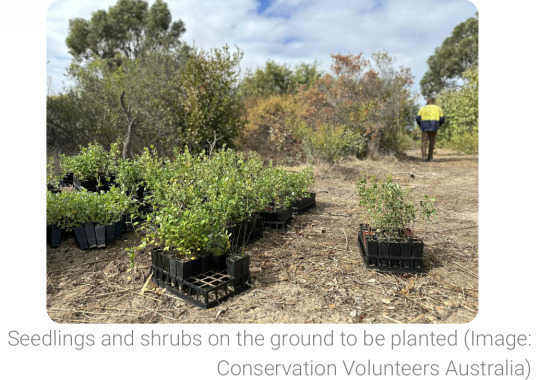
“A dedicated group of volunteers recently planted over a thousand native seedlings in Lewington Reserve [… and] re-established canopy cover to areas of the reserve to create cooling shade for the local community and provide homes for native wildlife. […] Planting lots of trees and shrubs in urban areas can help create shade and cool cities, mitigating the impacts of climate change, contributing to biodiversity conservation and building greener, more resilient communities.”
7. Sydney’s first dedicated affordable housing for trans women designed to deliver ‘positive outcomes’

“Community housing provider and charity Common Equity NSW, […] which is for people on very low to moderate incomes, prides itself on creating inclusive living and promotes the independence and well-being of people and communities […, and] will deliver the first-of-its-kind social housing in a bid to provide a safe place to live for transgender women seeking an affordable home.”
8. Rewilding: How a herd of bison reintroduced to Romania is helping ‘supercharge’ carbon removal

“170 European Bison reintroduced to Romania’s Țarcu mountains could help capture and store the carbon released by up to 84,000 average US petrol cars each year. […] By grazing a 48 square kilometre area of grassland in a wider landscape of 300 kilometres squared, they helped to capture an additional 54,000 tonnes of carbon each year. That is around 10 times the amount that would be captured by the ecosystem without the bison.”
9. World’s biggest grids could be powered by renewables, with little or no storage

“[…] 100% renewable supply can then match the load by putting surplus electricity into two kinds of distributed storage worth that [an energy expert] says are worth buying anyway – ice-storage air-conditioning and smart bidirectional charging of electric cars, and recover that energy when needed, filling the last gaps with unobtrusively flexible demand.”
10. Supporting the Long-Term Survival of Copper River Salmon and Alaska Native Traditions
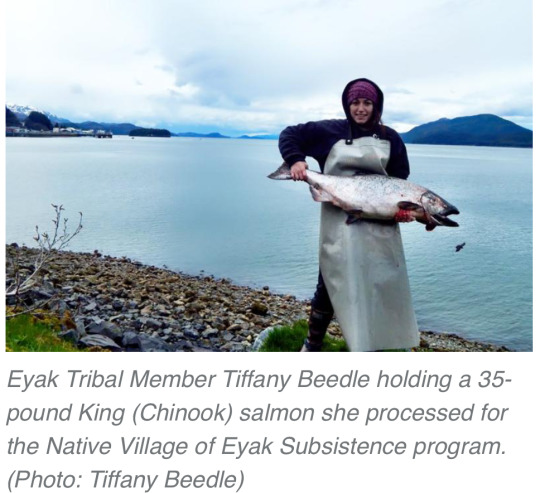
“With $4.3 million in NOAA funds, the Copper River Watershed Project and The Eyak Corporation will remove fish passage barriers, opening more streams for salmon spawning and subsistence fishing. [… As part of this effort, o]ld narrow culverts that constrict water flow will be replaced with “stream simulation” culverts wide enough to fit the full stream, including its banks. They are also deep to allow contractors to place stones and other material inside to mimic a natural stream bottom.”
May 8-14 news here | (all credit for images and written material can be found at the source linked; I don’t claim credit for anything but curating.)
#hopepunk#good news#rhino#white rhino#africa#conservation#rewilding#climate change#florida#wildlife#life expectancy#health#spain#green space#urban parks#recycling#trees#global warming#trans#affordable housing#australia#bison#romania#carbon#carbon capture#renewableenergy#reforestation#salmon#alaska native#nature
393 notes
·
View notes
Text
Agentic Research in Tech: Human Voices Behind the Algorithms
In today’s rapidly evolving digital world, algorithms influence everything—from what we read and watch to how we navigate health care and job applications. Yet, much of tech design is still built on abstraction and efficiency, leaving out the lived realities of users. This is where agentic research introduces a powerful and necessary shift. By prioritizing user voice, experience, and emotion, it humanizes technology development.

Agentic research views users not as test subjects or data points but as active collaborators. In tech design, this means co-creating systems with the people who will use them, drawing from their real-world challenges, emotions, and feedback. It invites deeper questions about ethics, impact, and inclusion—transforming the way digital tools are built and experienced.
Traditional UX research often relies on usability metrics, click-through rates, or predefined tasks. While useful, these metrics only scratch the surface. Agentic methods, on the other hand, go deeper by engaging users in reflective storytelling, visual mapping, journaling, and open dialogue. These tools capture not just how users interact with a product, but why they behave the way they do, what they fear, value, or desire, and how the system shapes their agency.
This approach is particularly important in areas like AI design, health tech, educational apps, and social platforms, where the consequences of digital experiences are deeply personal and emotional. For example, consider an AI recommendation tool used in hiring. Instead of merely measuring response rates, agentic research would involve job seekers in discussions about transparency, bias, and dignity—leading to a more ethical, human-centered solution.
Moreover, agentic research emphasizes co-design, encouraging users to sketch features, build mockups, and critique early prototypes. This not only results in more relevant products but also empowers users as co-creators, building trust and equity in the design process.
Incorporating agentic principles into tech research isn’t just a methodological shift—it’s a moral one. It challenges developers and researchers to think beyond convenience and efficiency, toward empathy, justice, and inclusion.
Using Agentic Research in Tech:
Use reflective journaling tools to help users share their experiences in their own words and time.
Involve users in co-design sessions, letting them shape wireframes, flows, and content.
Test concepts through dialogue, not just usability labs—focus on meaning, not only metrics.
2 notes
·
View notes
Text
The Future of Digital Aesthetics: Insights from a Leading Web Design Company

In the current era of extensive digital connectivity, a website serves as more than merely an online presence; it represents your brand's identity, acts as the initial interaction with prospective clients, and frequently plays a crucial role in customer engagement. the deciding factor in whether a user engages further with your business. As the digital landscape evolves, the role of a Leading Web Design Company in the USA becomes pivotal in shaping this transformation. These experts create digital experiences that captivate audiences, enhance usability, and drive success.
Why Website Design Matters More Than Ever
In the digital marketplace, first impressions are everything. Research indicates that individuals develop an impression of a website in just 50 milliseconds. A thoughtfully crafted website not only captures interest but also builds credibility and fosters trust. It communicates the brand’s ethos and facilitates seamless user interactions, ensuring visitors stay longer and engage deeper.
The Leading Web Design Company in the USA recognizes these critical elements. It integrates cutting-edge strategies to ensure that your website is not only visually stunning but also functionally superior.
Emerging Trends in Web Design
The web design landscape is dynamic, constantly adapting to technological advancements and user preferences. Here are some trends shaping the future of digital aesthetics:
1. Minimalistic Design with Purpose
Less is more. Minimalism in design helps declutter websites, focusing on what truly matters—content and functionality. Leading web designers in the USA are perfecting the art of combining simplicity with impactful visuals.
2. Dark Mode and High-Contrast UI
Dark mode has become increasingly popular due to its aesthetic appeal and user comfort. It alleviates eye fatigue and provides websites with a stylish, contemporary appearance.
3. AI-Driven Personalization
Artificial intelligence is revolutionizing web design. AI tools analyze user behaviour to offer personalized experiences, making interactions more intuitive and effective.
4. Immersive 3D Elements
Three-dimensional visuals add depth and interactivity to websites, providing an engaging experience. From product displays to virtual tours, 3D elements bring a new dimension to design.
5. Voice-Activated Interfaces
With the rise of voice assistants like Siri and Alexa, websites are beginning to incorporate voice-activated interfaces to make navigation even more user-friendly.
6. Accessibility and Inclusive Design
Inclusive design guarantees that websites are usable by everyone, including individuals with disabilities. This approach is not just ethical but also expands the reach of businesses.
Key Features of a Well-Designed Website
To ensure your website stands out, a Leading Web Design Company in the USA focuses on these essential elements:
Responsive Design: A website must perform seamlessly across all devices—desktops, tablets, and smartphones.
Fast Loading Speeds: Users expect a site to load within two seconds; anything longer can lead to lost opportunities.
User-Friendly Navigation: Intuitive menus and logical layouts guide users effortlessly through your website.
SEO-Optimized Content: High-quality content integrated with strategic keywords ensures visibility on search engines.
Engaging Visuals: High-resolution images, videos, and animations captivate users and convey messages effectively.
Secure and Reliable: Robust security measures protect user data, fostering trust and confidence.
The Role of Creativity and Strategy in Web Design
Creativity is the lifeblood of web design, but strategy ensures that creativity serves a purpose. A Leading Web Design Company in the USA combines these two elements to create designs that are not just visually appealing but also strategically aligned with business goals.
Understanding the Brand
Each business has its own distinct characteristics, and its website ought to showcase this uniqueness. Web designers delve deep into understanding a brand’s identity, audience, and objectives before crafting the design.
Data-Driven Decisions
Modern web design relies heavily on analytics. User behaviour data helps identify areas of improvement, ensuring that the website evolves with user needs.
Focus on Conversion
Ultimately, a website should drive results. Whether it’s generating leads, making sales, or increasing engagement, the design should be optimized for conversions.
Why Choose a Leading Web Design Company in the USA?
The USA is home to some of the most innovative and talented web design professionals in the world. These companies set the benchmark for global web design standards by combining technical expertise with creative excellence.
Unmatched Expertise
Web designers in the USA are equipped with the latest tools and technologies to deliver world-class designs.
Tailored Solutions
Rather than adopting a one-size-fits-all approach, the Leading Web Design Company in the USA offers customized solutions that cater to the unique needs of businesses.
Ongoing Support
A great website is not a one-time project. Ongoing updates, maintenance, and support ensure that your digital presence remains relevant and effective.
Preparing for the Future of Web Design
As technology progresses, the future of web design presents thrilling opportunities. From augmented reality (AR) integration to blockchain-secured websites, the next decade will witness groundbreaking innovations. Collaborating with a Leading Web Design Company in the USA ensures that your business stays ahead of the curve, leveraging these advancements to build a digital presence that stands out.
Conclusion
In the competitive digital landscape, having a cutting-edge website is no longer optional—it’s a necessity. Partnering with a Leading Web Design Company in the USA guarantees that your business receives a website that is not just aesthetically pleasing but also strategically designed to achieve your goals.
Invest in your digital future today. Embrace the expertise of the USA’s top web designers and create a website that resonates, engages, and converts. The future of digital aesthetics is here—are you ready to be a part of it?
#Leading Web Design Company in USA#Web Design Company#website development#web design#web developing company#UI/UX Design Company in USA#digital marketing#advertising#branding#ecommerce#united states#USA#new york#washington dc#Alaska#Arizona#California#florida#Georgia#Hawaii#Indiana#los angeles#san francisco
2 notes
·
View notes
Text
𓆝 𓆟 𓆞 𓆝 𓆟𓆝 𓆟 𓆞 𓆝 𓆟𓆝 𓆟 𓆞 𓆝 𓆟𓆝 𓆟 𓆞 𓆝 𓆟𓆝 𓆟 𓆞 𓆝 𓆟𓆝
Week 11: Digital Citizenship and Conflict: Social Media Governance
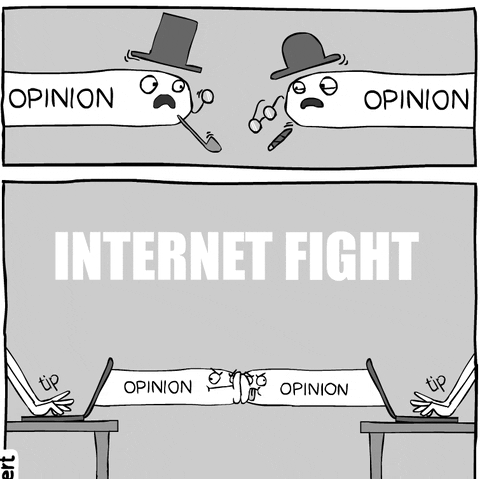
We've only been talking about the "good" of digital community so far, but it's essential to acknowledge that the online world also brings its share of conflicts. While it is true that the online world is all about promoting inclusivity and connectivity, this inclusiveness also bring conflict.
𓆝 𓆟 𓆞 𓆝 𓆟𓆝 𓆟 𓆞 𓆝 𓆟𓆝 𓆟 𓆞 𓆝 𓆟𓆝 𓆟 𓆞 𓆝 𓆟𓆝 𓆟 𓆞 𓆝 𓆟𓆝
While social media platforms promote inclusivity and connectivity, this inclusiveness can lead to clashes over values, identities, and ideologies. Under the banner of freedom of expression, online platforms has become arenas for conflicts on a wide range of issues.
These conflicts highlight that not everyone embodies the principles of digital citizenship. While there may not be a definitive solution, understanding and addressing these issues is a critical first step.
So, let’s delve into the nature of online conflicts and explore potential ways to manage them.
𓆝 𓆟 𓆞 𓆝 𓆟𓆝 𓆟 𓆞 𓆝 𓆟𓆝 𓆟 𓆞 𓆝 𓆟𓆝 𓆟 𓆞 𓆝 𓆟𓆝 𓆟 𓆞 𓆝 𓆟𓆝
Types of Online Conflicts
Online conflicts manifest in many forms, with cyberbullying being one of the most prevalent. Cyberbullying includes several harmful behaviors (Agustiningsih & Yusuf 2023):
Harassment: Sending repetitive offensive, abusive, and insulting messages.
Exclusion: Intentionally excluding someone from online groups.
Flaming: Engaging in heated arguments in chat rooms, often related to gaming or competition.
Cyberstalking: Repeatedly sending threatening or intimidating messages that cause fear for safety.
Outing: Publicly revealing someone's secrets or embarrassing information.
Impersonation: Imitating someone’s identity online or offline.
Denigration: Spreading false and derogatory information about others.
𓆝 𓆟 𓆞 𓆝 𓆟𓆝 𓆟 𓆞 𓆝 𓆟𓆝 𓆟 𓆞 𓆝 𓆟𓆝 𓆟 𓆞 𓆝 𓆟𓆝 𓆟 𓆞 𓆝 𓆟𓆝
Social Media Governance

The governance of social media platforms is a pressing concern, especially when freedom of expression and democratic ideals are used to justify hate speech, misinformation, and violence (Kumar & Gupta 2023).

Balancing these dynamics and understanding the implications of one's digital footprint is an ongoing challenge.
On one hand, online conflicts have significantly impacted events like the US Presidential Election and the Covid-19 Pandemic, where misinformation online led to vaccine hesitancy and refusal (Kumar & Gupta 2023).
On the other hand, some argue that regulation can curb free speech, creating a contentious debate about the best approach to social media governance.
𓆝 𓆟 𓆞 𓆝 𓆟𓆝 𓆟 𓆞 𓆝 𓆟𓆝 𓆟 𓆞 𓆝 𓆟𓆝 𓆟 𓆞 𓆝 𓆟𓆝 𓆟 𓆞 𓆝 𓆟𓆝
Self-Governance
Still, governance persists in the online landscape for our own good as well.

One popular framework is self-governance, where platforms enforce rules and regulations through community guidelines and terms of service (Kumar & Gupta 2023).
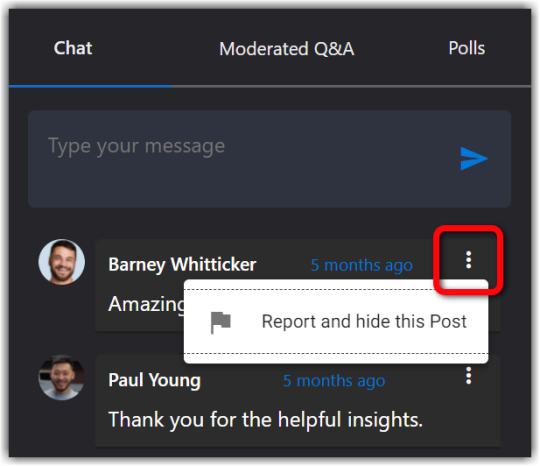
Platforms also invite users to flag and rate content (also known as source rating) to help regulate the content posted by others (Kim, Moravec & Dennis 2019).
𓆝 𓆟 𓆞 𓆝 𓆟𓆝 𓆟 𓆞 𓆝 𓆟𓆝 𓆟 𓆞 𓆝 𓆟𓆝 𓆟 𓆞 𓆝 𓆟𓆝 𓆟 𓆞 𓆝 𓆟𓆝
Humor in Conflicts
Legal measures alone are insufficient to address the complexities of online conflicts. Humour has emerged as a powerful tool to combat these issues.
As worded by Sundén & Paasonen (2019): "Anger mobilizes affective publics and fuels social change, but it also wears bodies down: constant anger is simply exhausting."
We all experience fatigue from doom scrolling, and while anger and seriousness have their place, there's also a need for love, joy, and compassion.
𓆝 𓆟 𓆞 𓆝 𓆟𓆝 𓆟 𓆞 𓆝 𓆟𓆝 𓆟 𓆞 𓆝 𓆟𓆝 𓆟 𓆞 𓆝 𓆟𓆝 𓆟 𓆞 𓆝 𓆟𓆝

As investigated by Sundén and Paasonen (2019), the #MeToo movement exemplifies the transformative power of redistributing shame from victims to perpetrators and bystanders.
Traditionally, shame has a paralyzing effect, immobilizing those who bear its burden and impeding their ability to act. This emotional weight can be overwhelming, preventing individuals from moving forward or seeking justice
Shame, as Sundén and Paasonen (2019) argue, contrasts with laughter. While shame can isolate and stifle, laughter has the potential to energize and mobilize.
It breaks through the heavy fog of embarrassment and guilt, providing a release that can invigorate and empower. Laughter brings a sense of relief and community, helping people to connect and support one another.
Integrating humor and joy into these movements can provide necessary balance, offering moments of respite and rejuvenation.
𓆝 𓆟 𓆞 𓆝 𓆟𓆝 𓆟 𓆞 𓆝 𓆟𓆝 𓆟 𓆞 𓆝 𓆟𓆝 𓆟 𓆞 𓆝 𓆟𓆝 𓆟 𓆞 𓆝 𓆟𓆝
Conclusion
In conclusion, while digital citizenship and social media governance remains ambiguous and faced challenges, a multi-faceted approach that includes legal measures, self-governance, and emotional resilience is essential.
By understanding and addressing these conflicts, we can strive for healthier and more inclusive digital communities.
So, do not be afraid to explore and engage with conflicts, it is only through understanding these issues we can shape a better online and offline experience.
𓆝 𓆟 𓆞 𓆝 𓆟𓆝 𓆟 𓆞 𓆝 𓆟𓆝 𓆟 𓆞 𓆝 𓆟𓆝 𓆟 𓆞 𓆝 𓆟𓆝 𓆟 𓆞 𓆝 𓆟𓆝
References
Agustiningsih, N & Yusuf, A 2023, ‘Types of cyberbullying experienced by adolescents’, Malaysian Journal of Medicine and Health Sciences, vol. 19, pp. 99–103.
Kim, A, Moravec, PL & Dennis, AR 2019, ‘Combating fake news on social media with source ratings: The effects of user and expert reputation ratings’, Journal of Management Information Systems, vol. 36, no. 3, Routledge, pp. 931–968.
Kumar, AM & Gupta, S 2023, ‘Governance of social media platforms: A literature review’, Pacific Asia Journal of the Association for Information Systems, vol. 15, pp. 56–86.
Sundén, J & Paasonen, S 2019, ‘Inappropriate laughter: Affective homophily and the unlikely comedy of #MeToo’, Social Media + Society, vol. 5, no. 4, p. 205630511988342.
2 notes
·
View notes
Text
Xenoblade Chronicles: Future Connected Thoughts

-Future Connected is 100% done! All quests, all ponspectors, full collectopedia, all Quiet Moments, and full map! For a 10~ hour epilogue, it certainly had its charms.
-Story and characters were extremely good and heartfelt. Melia getting to be unabashedly happy and powerful in her leadership position is a treat to see. Kino and Nene were feel good team mates that brought smiles to my face, and their inclusion led to Riki being developed without even being there! Best dadapon even more so. Shulk's story was over in the main game, so seeing him in a supportive role was not a shock, and he's so damn sweet. And again, Tyrea's story role in this-as well as Teelan being brought in as a full supportive character-was a welcome inclusion, something that I felt was a great bow tied on to XC1's world.
-Side characters were good, for the most part. Surprisingly poignant and nuanced dialogue from named NPCs, as well as welcome funny moments here and there. I enjoyed Maxis and the Companions, as well as their friction with Gran Dell. Were the game to be longer, I'd call it underdeveloped, but since it's as short as it is, it's just fine.
Gael'gar though... kind of weak tbh. He created tension in the story that, IMO, wasn't necessary or impactful. Mixed blood High Entia hating pure bloods as a reversal of the main game's take is an interesting concept, but something that can't meaningfully take hold in a short adventure, especially since the blood heritage thing is woven tightly into the main game's narrative with the Telethia's origins. Gael'gar blowing up the lab was ultimately for naught in my eyes, as yeah it sets back Teelan and Tyrea's research, but reasonably that probably wasn't gonna be solved before the Fog King issue anyway. He lacks threat and charisma either, so he's not even entertaining or engaging, he's kind of just a negative.
-WE MEASURE! FIND TREASURE! PONSPECTORS TIL WE DIE!
I loved those little fuckers, even if some of the quests involving them were annoying. Shout out to the chuuni ponspector, your quest may have been hell, but I loved your dialogue. They were great in the gameplay sense too, adding some meat to the system. Speaking of which...
-I didn't care much for the combat at all. I have an overall really positive opinion on XC1's combat, where even though spikes are an awful design decision and the game is centralized around topple locking, the variety of arts, skill trees and links, and various armors and gems led to a great deal of customization and fun. Future Connected is a short romp, so it makes sense for it to be stripped, but stripping XC1's combat makes one realize that it's not quite that fun in its bare form. Things become a bit more routine or predictable, and I think the devs knew that, so they made enemies a bit more annoying and tanky (I think even one NPC commented that the region's monsters are stronger on the shoulder than they normally would be). Until I got access to the Ponspector Attack, I felt at the mercy of things just playing out with no major impact; like I was a level 60 hero going through the prologue again. It wasn't hard to eventually adjust, but still. Meh.
-Specific point about battling. Getting rid of Enchant makes sense, since no Mechon. However, why not also get rid of Shield and enemy Talent Arts since there's no visions? Shield's main purpose was to stop talent arts before they happen, but with no visions you never know when they're happening ever. At that point, Shield is kind of worthless the first time round, and it becomes trial and error depending on the enemy if you keep dying to it. Most often, the only Monado Art you needed was Armor, since that's more reliable and multipurpose. Just strange.
-What else... music was top notch, I looooooved the Fog Beast theme. Visuals were great, and huge fucking props to breathing life into the Bionis' Shoulder, since that was major cut content in the original Wii release. Repurposing it for an epilogue mini-adventure was a smart move. Exploring the continent itself was fun, so they did a great job. I loved each location, and I oddly enough enjoyed the high concept names for each landmark and the like. Very fantastical.
-Having played XC3, anything and everything about the Fog King and the Rift, like these:




They're such brain candy moments for literature nerds like me, oooh, I love it. The XC3 art book revealed that Alrest had a similar event to Future Connected, just not seen before XC3's events. I imagine, that since FC was a rift above Alcamoth that spouted out a Guldo, then there was most likely a rift in the center landscape of the new Alrest, where Morytha used to be. I like to think Alrest's version of the Fog King would be a Telethia that got caught in the rift.
-Last but certainly not least, JENNA COLEMAN! Getting her back for both Future Connected and XC3 was amazing, and she kills it as Melia. So mature, heartfelt, compassionate, an A+ performance.

-Overall, I had fun! Would I play it again? Ehhh, maybe someday, but whenever I play XC1 again, I'm not likely to revisit FC along with it every time. Still, loved the scenes and what it brought to the overall Xenoblade story.
Taking another break before moving on. Continuing on, I'm gonna play Torna next, then main game XC2. I couldn't be more excited to play those again tbh.
6 notes
·
View notes
Text
Beyond Clicks and Conversions: The Ethical Edge in Digital Marketing
In our previous sections, we explored establishing a strong digital marketing presence in Mumbai and scaling it for a global reach. Now, let's shift our focus to a crucial aspect often overlooked – digital marketing ethics. In today's data-driven world, ethical considerations are paramount for building trust and fostering long-term brand success.
Transparency: Building Trust in the Digital Age
Imagine building a strong relationship with a customer in Mumbai or across the globe. Transparency is the foundation. Be upfront about your data collection practices and how you use customer information. Clearly communicate the terms and conditions of your marketing campaigns and avoid misleading or deceptive tactics.
Respecting User Privacy: Data for Good, Not Manipulation
Customer data is a valuable asset, but it comes with immense responsibility. Only collect data relevant to your marketing goals and obtain explicit consent from users before collecting and using their information. Implement robust data security measures and allow users to access, correct, or delete their data upon request.
Combating Clickbait and Misinformation: Earning Attention, Not Attention-Grabbing
Flashy headlines and sensationalized content might grab attention initially, but they erode trust in the long run. Focus on creating high-quality content that educates, informs, and genuinely engages your audience. Avoid spreading misinformation or making unsubstantiated claims.
Promoting Diversity and Inclusion: A World of Voices, Not Stereotypes
The beauty of digital marketing lies in its ability to connect with a global audience. Strive to represent diversity and inclusion in your marketing materials. Showcase people from different backgrounds and cultures in your content and avoid perpetuating stereotypes or biases.
Sustainable Marketing: Building a Responsible Future
Digital marketing has an environmental impact. Optimize your website and emails for efficiency to reduce energy consumption. Consider partnering with eco-friendly digital marketing agencies or promoting sustainable practices through your campaigns.
A Story of Change: Embracing Ethical Digital Marketing
Imagine a Mumbai-based travel agency promoting eco-tourism destinations. They partner with a digital marketing agency that prioritizes ethical practices. Together, they craft compelling content that showcases the beauty of these destinations while also educating potential travelers about responsible tourism practices. The agency utilizes data analytics to track campaign performance but ensures data privacy is maintained at all times. This ethical approach not only attracts environmentally conscious travelers but also positions the travel agency as a leader in sustainable tourism.
The Responsibility of a Marketer: Building Trustworthy Brands
Digital marketing empowers you to connect with a global audience, but with this power comes responsibility. By embracing ethical practices, you can build trust with your customers, establish a positive brand reputation, and contribute to a more responsible digital marketing landscape. Let your brand story not only resonate with your audience but also reflect your commitment to ethical principles.
Remember, the digital world thrives on connection and trust. By prioritizing ethical practices in your digital marketing strategy, you navigate beyond clicks and conversions to build a brand that not only thrives but also inspires in the ever-evolving digital landscape.
#digital marketing agency#360 digital marketing agency#digital marketing services#SEO services#PPC advertising#social media marketing#content marketing#email marketing#web design & development#digital analytics
3 notes
·
View notes
Text
Revolutionizing Social Media: What Namastetu Technology Would Like to Change Today
Introduction
In today's digital age, social media has become an integral part of our lives. Whether it's connecting with friends and family, staying informed about current events, or promoting your business, social media platforms have reshaped the way we communicate and interact. As the technological landscape evolves, it is essential to reflect on the current state of social media and consider the changes necessary to create a safer, more connected, and engaging online environment. In this blog, we'll explore what Namastetu Technology, a pioneer in innovative digital solutions, envisions as changes to improve the social media experience.
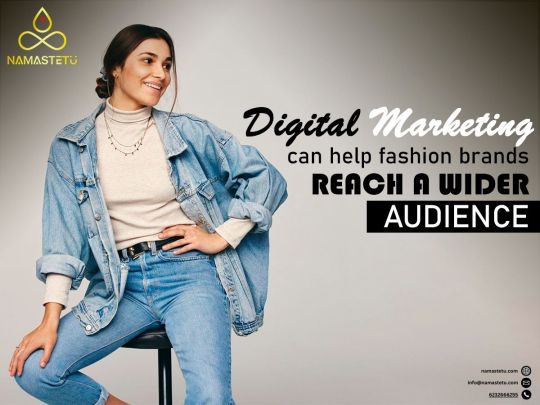
1. Enhancing User Privacy
Namastetu Technology recognizes the growing concerns about user privacy on social media platforms. From data breaches to intrusive ad targeting, many users feel their privacy is being compromised. We believe that it is imperative for social media companies to prioritize the protection of user data. To address this issue, we propose stricter data security measures, more transparent data usage policies, and clear options for users to control their data sharing.
2. Tackling Misinformation
The proliferation of misinformation and fake news on social media platforms has become a significant concern. Namastetu Technology advocates for more robust fact-checking mechanisms and stricter regulations against the spread of false information. By promoting accurate and reliable information, we can help users make informed decisions and foster a healthier online environment.
3. Mental Health and Well-being
The negative impact of social media on mental health has been a topic of discussion for quite some time. Namastetu Technology believes that social media platforms should take a more active role in addressing this issue. This can be achieved through features like daily screen time reminders, mental health resources, and algorithms designed to minimize content that might contribute to stress or anxiety.
4. Combating Cyberbullying
Cyberbullying remains a significant problem on social media, affecting individuals of all ages. Namastetu Technology encourages social media platforms to invest in advanced AI algorithms and reporting systems to identify and address cyberbullying incidents promptly. Creating a safe and inclusive online space should be a top priority for every social media platform.
5. Promoting Authentic Engagement
Engagement metrics often drive user behavior on social media platforms. To foster more authentic connections, Namastetu Technology suggests modifying algorithms to prioritize content from friends and family over sensational or clickbait material. Encouraging meaningful interactions should be at the core of any social media platform's mission.
6. Content Moderation
Content moderation on social media can be a challenging task. However, it is essential to strike a balance between free speech and responsible content management. Namastetu Technology proposes investing in more advanced content moderation technology to identify and remove harmful content while preserving freedom of expression.
7. Ethical Advertising
Social media advertising can sometimes feel intrusive or overwhelming. Namastetu Technology encourages social media platforms to adopt stricter guidelines for advertising to ensure that users are not bombarded with irrelevant or excessive ads. This would create a more pleasant user experience.
Conclusion
Namastetu Technology envisions a brighter and safer future for social media. By addressing the pressing issues of user privacy, misinformation, mental health, cyberbullying, authentic engagement, content moderation, and ethical advertising, social media platforms can become more responsible and user-centric. We hope that these changes will lead to a more positive online experience, fostering genuine connections and personal well-being. It's time for social media to evolve, and Namastetu Technology is ready to play its part in this transformation.
#contentmarketing#digitalmarketing#googleadwords#seo#emailmarketing#facebookmarketing#instagrammarketing#mobileapps#smm#websitedesign
2 notes
·
View notes
Text
OTT Advertising vs. CTV Advertising: Which One Is Best for Your Brand?

Image Source: FreeImages
Let's dive into every section to gain a complete know-how of OTT marketing vs. CTV marketing.
1. Understanding OTT Advertising
OTT, which stands for Over-the-Top, refers back to the shipping of video content over the net, bypassing conventional distribution channels including cable or satellite TV for PC carriers. OTT services allow viewers to circulate their favorite TV shows, films, and other video content material on diverse gadgets, including smartphones, capsules, computers, and clever TVs. Examples of popular OTT systems encompass Hulu, Netflix, Amazon Prime Video, and Disney+.
2. Exploring CTV Advertising
Connected TV, or CTV, refers back to the gadgets on which visitors get admission to and eat OTT content. These gadgets consist of smart TVs, streaming sticks (which include Roku, Apple TV, or Amazon Fire TV), gaming consoles (like Xbox or PlayStation), and set-top containers with net connectivity. CTV devices enable viewers to circulate OTT content without delay on their TV monitors, providing a more immersive and traditional TV-like reveal.
3. The Evolution of OTT and CTV
The upward thrust of OTT and CTV can be attributed to several factors. With the growing availability of excessive-pace net and the proliferation of net-linked gadgets, viewers have more options and versatility in how they devour video content material. The comfort of on-call for streaming and the potential to customize viewing stories have driven the recognition of OTT and CTV.
4. The Growing Popularity of OTT and CTV
The growth of OTT and CTV has been extremely good in recent years. According to Nielsen, streaming accounted for 34.8% of general TV consumption, surpassing cable and broadcast TV for the first time. This shift in viewership behavior has caught the eye of advertisers, who are now trying to leverage OTT and CTV systems to reach their target audiences.
5. Advantages of OTT Advertising
OTT advertising offers several blessings for entrepreneurs. Firstly, it affords the right of entry to a huge and numerous target market, as OTT systems have a worldwide reach and cater to various demographics. Secondly, OTT lets in for superior targeting abilities, allowing advertisers to supply customized and relevant advertisements to unique audiences. Additionally, OTT advertising and marketing provides a brand-safe environment for ad placements, making sure that commercials are displayed in a top-rate and trustworthy context.
6. Advantages of CTV Advertising
CTV advertising and marketing, however, give unique blessings to entrepreneurs. One of the important blessings of CTV is the capability to reach viewers at the large display, offering an extra immersive and attractive viewing experience. CTV advertisements are normally non-skippable, ensuring excessive completion fees and expanded logo exposure. CTV additionally lets in for more innovative advert formats, inclusive of interactive and dynamic commercials, that may decorate logo messaging and pressure higher engagement.
7. Challenges in OTT and CTV Advertising
While OTT and CTV advertising presents several possibilities, there are also demanding situations that entrepreneurs need to navigate. One of the principal challenges is the fragmented nature of the OTT and CTV ecosystem, with more than one structure, devices, and content material vendors. This fragmentation makes it crucial for advertisers to have a strategic approach to reach their audience successfully. Additionally, measuring the impact and return on funding (ROI) of OTT and CTV advertising and marketing may be hard because of the shortage of standardized measurement metrics.
8. Targeting Capabilities in OTT and CTV
Both OTT and CTV marketing offer superior targeting talents, allowing advertisers to supply greater customized and applicable ads to their audiences. OTT marketing permits concentrate primarily on different factors, which include demographics, pastimes, and viewing conduct. CTV advertising, in particular, offers the opportunity to target audiences on a massive screen, handing over ads directly to viewers' living rooms. This unique concentration guarantees that advertisements are proven to the proper humans at the right time.
9. Effective Ad Formats in OTT and CTV
When it comes to ad formats, both OTT and CTV marketing offer flexibility and creativity. OTT platforms typically aid various ad formats, along with pre-roll, mid-roll, and submit-roll commercials, similar to conventional TV classified ads. CTV, however, provides additional possibilities for interactive and dynamic ad formats, allowing for more engaging and interactive studies. These ad codecs can encompass overlays, interactive factors, and clickable calls to action, improving the viewer's engagement with the content.
10. Measuring Success in OTT and CTV Advertising
Measuring the fulfillment of OTT and CTV advertising campaigns requires a combination of conventional and digital dimension approaches. Advertisers can track metrics along with reach, frequency, completion quotes, click-thru rates, and conversions to evaluate the effectiveness of their campaigns. Additionally, leveraging superior size technologies, together with attribution fashions and pass-tool tracking, can provide deeper insights into the impact of OTT and CTV advertising on client conduct and conversions.
11. Choosing Between OTT and CTV Advertising
When deciding between OTT and CTV advertising and marketing, it's essential to recollect your marketing campaign goals, target audience, and available sources. OTT advertising gives a broader reach and the capability to target visitors across more than one device, making it appropriate for achieving a diverse audience. CTV advertising and marketing, alternatively, presents a greater immersive and engaging enjoyment on the large screen, making it perfect for logo cognizance and effect-driven campaigns. Ultimately, the selection between OTT and CTV will depend upon your unique dreams and target market.
12. Integrating OTT and CTV Advertising into Your Strategy
To efficaciously integrate OTT and CTV advertising into your marketing approach, it is crucial to not forget the subsequent steps:
Identify your target market: Understand your audience's demographics, hobbies, and viewing conduct to create powerful strategies.
Craft compelling advert creatives: Develop enticing and relevant ad creatives that resonate with your audience and align with the precise context of OTT and CTV structures.
Leverage advanced targeting competencies: Use the superior focus on capabilities supplied by OTT and CTV systems to deliver personalized and applicable commercials to your target audience.
Measure and optimize: Continuously display the performance of your OTT and CTV campaigns, examine the facts, and make data-driven optimizations to enhance your campaign effectiveness.
Consider go-channel integration: Integrate OTT and CTV advertising with different digital marketing channels, along with social media and search advertising, to create a cohesive and complete advertising method.
In the end, both OTT and CTV advertising present precise opportunities for entrepreneurs to attain their goal audiences in a greater personalized and engaging way. By knowing the differences between the 2 and leveraging their respective advantages, advertisers can create impactful campaigns that drive brand attention, engagement, and conversions. With the evolving digital landscape, incorporating OTT and CTV marketing into your advertising method is vital to stay ahead of the opposition and connect to your audience in a significant way.
[Additional Information: 9Media Online is one of the best Programmatic Advertising where you will get the best OTT and CTV advertising services]
#ott advertising#ott vs ctv advertising#ctv advertising#programmatic advertising#connected tv advertising#marketing#advertising
2 notes
·
View notes
Text
Phillips Exeter Academy, Admission Requirements, Teachers, Alumni, Fees, History
New Post has been published on https://www.aifoxuan.com/phillips-exeter-academy-admission-requirements-teachers-alumni-fees-history/
Phillips Exeter Academy, Admission Requirements, Teachers, Alumni, Fees, History

Phillips Exeter Academy Admission Requirements
Phillips Exeter Academy Admission Requirements: Paving the Way to Excellence
Phillips Exeter Academy, often referred to as Exeter, stands as a paragon of academic excellence and innovation in the realm of secondary education. As one of the most esteemed preparatory schools in the United States, Exeter’s mission is to inspire and equip young minds with the skills, knowledge, and character to lead meaningful lives. To achieve this goal, Exeter maintains rigorous admission requirements that ensure a diverse and exceptional student body.
Academic Excellence as the Cornerstone
At the heart of Exeter’s admission requirements lies a commitment to academic excellence. Prospective students are expected to showcase not only a strong academic record but also a genuine enthusiasm for learning. Exeter seeks students who are not content with the status quo but are driven by curiosity, creativity, and a desire to delve deeper into their studies.
The Admission Process
The path to becoming an Exeter student is a competitive one, involving several key components. First and foremost are standardized test scores, typically the SSAT (Secondary School Admission Test) or the ISEE (Independent School Entrance Exam). These assessments provide a standardized measure of a student’s academic abilities and potential.
Transcripts from previous schools play a pivotal role, reflecting a candidate’s academic achievements and commitment. Strong grades and a challenging curriculum are valued indicators of a student’s readiness for the demands of an Exeter education.
Recommendations and Personal Interviews
Exeter’s admission process is holistic, taking into account the whole student. Recommendations from teachers and school officials provide valuable insights into a candidate’s character, work ethic, and potential to contribute positively to the Exeter community.
Personal interviews also offer an opportunity for students to showcase their personality, interests, and aspirations. These interviews serve as a chance to connect on a more personal level and allow the admissions team to better understand the individual behind the application.
A Diverse Community
Exeter places a premium on diversity and seeks students from varied backgrounds, regions, and cultures. This commitment to diversity enriches the learning environment and fosters a sense of global citizenship among students.
Beyond Academics
While academic excellence is paramount, Exeter also values qualities such as leadership, integrity, and a passion for making a difference in the world. The Academy seeks students who will actively engage in the community, contribute to its vibrant culture, and make a positive impact on campus life.
The Journey Begins
The admission requirements at Phillips Exeter Academy are designed to identify students who not only possess academic potential but also embody the qualities and values that Exeter holds dear. Those who embark on this journey understand that it is not just about gaining admission to a prestigious institution; it’s about becoming part of a legacy of thinkers, leaders, and change-makers who have shaped the world.
In conclusion, Phillips Exeter Academy’s admission requirements are a reflection of its commitment to nurturing the brightest minds and fostering a diverse and inclusive community of learners. It is an institution where academic rigor, character development, and a passion for learning converge to create an educational experience like no other, setting the stage for a lifetime of achievement and impact.
youtube
Phillips Exeter Academy Teachers
Phillips Exeter Academy Teachers: Nurturing Excellence in Education
Phillips Exeter Academy, known worldwide for its commitment to academic excellence and innovation, owes much of its success to the exceptional faculty members who shape the educational experience of its students. At Exeter, teachers are not just educators; they are mentors, guides, and passionate advocates for intellectual growth.
Diverse Expertise
One of the hallmarks of Exeter’s faculty is its diversity of expertise. From accomplished authors and scientists to historians, mathematicians, and artists, Exeter’s teachers bring a wealth of knowledge and real-world experience to the classroom. This diversity not only enriches the curriculum but also allows students to explore a wide range of subjects under the guidance of experts in their respective fields.
A Passion for Teaching
The teachers at Exeter share a common trait—a genuine passion for teaching and a deep love for their subjects. This passion is contagious, inspiring students to delve deeper into their studies, ask thought-provoking questions, and develop a lifelong love of learning. In the Harkness classrooms, where dialogue and discussion are the norm, teachers play the role of facilitators, encouraging students to think critically and engage actively in their education.
Accessibility and Mentorship
Exeter teachers are more than just instructors; they are mentors who invest in the success and well-being of their students. With a commitment to accessibility, teachers are readily available to provide additional support and guidance, whether it’s clarifying complex concepts or offering advice on academic and personal matters. This mentorship fosters a sense of community and trust, creating an environment where students feel empowered to reach out for help and guidance.
Innovative Teaching Methods
Exeter’s teachers are at the forefront of innovative teaching methods. They embrace technology, experiential learning, and interdisciplinary approaches to ensure that students receive a well-rounded education that prepares them for the challenges of the future. Beyond the classroom, teachers often lead or facilitate extracurricular activities, clubs, and projects that allow students to explore their passions and interests further.
A Commitment to Inclusivity and Diversity
Exeter’s teachers understand the importance of a diverse and inclusive community. They create an environment where students from various backgrounds and perspectives can thrive. This commitment to diversity not only enhances the overall educational experience but also prepares students to become global citizens who can navigate and contribute to an increasingly interconnected world.
Shaping Future Leaders
In essence, Phillips Exeter Academy’s teachers are not just educators; they are mentors, role models, and champions of student success. They instill in students the values of critical thinking, intellectual curiosity, and a lifelong love of learning. The impact of Exeter’s teachers extends far beyond the classroom, shaping future leaders, scholars, and change-makers who go on to make a positive impact on society.
In conclusion, Phillips Exeter Academy’s teachers are the cornerstone of its educational excellence. They are dedicated professionals who inspire and empower students to reach their full potential, fostering a culture of intellectual curiosity and academic achievement. The lasting relationships formed between teachers and students at Exeter are a testament to the enduring influence of these exceptional educators.
Phillips Exeter Academy Alumni
Phillips Exeter Academy Alumni: Shaping the World with Excellence
Phillips Exeter Academy boasts a remarkable lineage of alumni who have made significant contributions to society across a spectrum of disciplines. These distinguished individuals, affectionately referred to as Exonians, exemplify the Academy’s commitment to fostering exceptional talent, instilling a deep love of learning, and nurturing the potential for greatness.
A Legacy of Achievement
Exeter’s alumni community stands as a testament to the institution’s dedication to academic excellence and intellectual growth. Graduates of the Academy have achieved success in fields ranging from literature and the arts to science, business, politics, and beyond. Among their ranks are Nobel laureates, Pulitzer Prize winners, world-renowned authors, influential policymakers, and visionary entrepreneurs.
Intellectual Curiosity and Lifelong Learning
The foundation of Exeter’s success lies in its dedication to fostering intellectual curiosity and a commitment to lifelong learning. Alumni often attribute their academic vigor and passion for discovery to their time at Exeter. The Harkness method, a hallmark of Exeter’s pedagogy, encourages open and dynamic dialogue, where students learn not only from their teachers but also from one another.
Global Impact
Exonians have consistently played pivotal roles in shaping the world’s cultural, social, and scientific landscapes. Their influence extends far beyond the walls of the Academy, as they engage with complex global challenges and drive innovation in various domains. Whether it’s through groundbreaking research, literary masterpieces, public service, or entrepreneurial ventures, Exeter alumni have made their mark on a global scale.
A Diverse and Inclusive Network
Exeter’s commitment to diversity and inclusion is reflected in its alumni network, which spans the globe and encompasses a wide range of backgrounds, perspectives, and experiences. This diversity enriches the network’s strength, facilitating connections and collaborations that transcend borders and cultural boundaries.
A Community of Giving Back
The Exeter community places a strong emphasis on giving back and paying forward the opportunities they have received. Many alumni actively engage with the Academy, returning as guest speakers, mentors, and benefactors, ensuring that future generations benefit from the same transformative experiences that shaped their lives.
A Proud Tradition
The success of Exeter’s alumni is not just a testament to their individual talents but also to the enduring values instilled during their time at the Academy. These values, which include a commitment to excellence, integrity, and social responsibility, continue to guide Exonians throughout their lives, further reinforcing the school’s legacy of achievement.
In conclusion, Phillips Exeter Academy’s alumni community is a testament to the power of education to inspire, empower, and effect positive change in the world. These accomplished individuals exemplify the Academy’s core principles and values, making a lasting impact in their respective fields and inspiring future generations of Exonians to follow in their footsteps.
Phillips Exeter Academy Fees
Phillips Exeter Academy Fees: Investing in Excellence
Phillips Exeter Academy, renowned for its commitment to academic excellence and fostering the next generation of leaders, offers a world-class education that comes with associated fees. While the cost of attending Phillips Exeter Academy represents a significant investment, it is essential to recognize the unparalleled value that this institution provides to its students.
Comprehensive Fee Structure
Phillips Exeter Academy’s fee structure includes several components, with the main ones being tuition, room and board, and additional fees. Tuition covers the cost of classroom instruction and academic support, while room and board encompass housing and dining services. Beyond these fundamental charges, there are also fees related to extracurricular activities, health services, and other school amenities.
Investing in Future Success
At Phillips Exeter Academy, the fees go beyond covering basic expenses; they represent an investment in a student’s future success. The Academy’s commitment to small class sizes, world-class faculty, and a dynamic learning environment ensures that students receive an education that prepares them not just for college but for a lifetime of intellectual and personal growth. The value of this investment becomes evident in the caliber of graduates who go on to excel in diverse fields and make a meaningful impact on society.
Financial Aid and Scholarships
Phillips Exeter Academy is dedicated to ensuring that a diverse and talented student body can access its exceptional educational opportunities. To this end, the school offers a robust financial aid program. Families who demonstrate financial need can apply for aid, which may include grants and scholarships to offset tuition costs. This commitment to accessibility aligns with the Academy’s values of inclusivity and creating a community where talent and potential are the primary considerations.
Transparency and Affordability
Transparency is a key principle in the fee structure at Phillips Exeter Academy. The Academy strives to provide families with a clear understanding of the costs associated with attending the school. Additionally, the school offers resources and guidance to help families navigate the financial aid application process, ensuring that deserving students are not deterred by financial barriers.
A Transformative Experience
In conclusion, Phillips Exeter Academy’s fees are an investment in a transformative educational experience. The Academy’s holistic approach to education, emphasis on critical thinking, and dedication to fostering a lifelong love of learning make it a unique and exceptional institution. While the costs associated with attending may be significant, the long-term benefits of an Exeter education are immeasurable, setting students on a path to success and fulfillment in their future endeavors.
For more detailed information about specific fees and financial aid opportunities, please visit the official Phillips Exeter Academy website or contact the school’s admission and financial aid offices.
Phillips Exeter Academy History
Phillips Exeter Academy History: A Legacy of Excellence
Phillips Exeter Academy, often simply called Exeter, stands as a beacon of excellence in American education, boasting a remarkable history that stretches back over 200 years. Founded in 1781 by John Phillips, a local merchant and visionary educator, the Academy began as a humble institution with a profound commitment to providing a superior education that would shape the minds and characters of its students.
From its earliest days, Exeter embraced innovative teaching methods, including the Harkness method, where students and teachers engage in open and dynamic discussions around a communal table. This approach fostered intellectual curiosity and a love of learning that became defining characteristics of Exeter graduates.
Throughout its history, Exeter has consistently adapted to the evolving educational landscape, embracing change while staying true to its core principles. It has been at the forefront of educational innovation, experimenting with progressive ideas that have often set the standard for American schools.
The Academy’s campus, located in Exeter, New Hampshire, has witnessed countless generations of students passing through its doors. Its historic buildings and iconic landmarks reflect the enduring commitment to academic excellence and intellectual growth. Exeter’s alumni, known as Exonians, have achieved remarkable success in various fields, including literature, science, politics, and the arts, leaving an indelible mark on society.
One of the hallmarks of Exeter’s history is its dedication to inclusivity and accessibility. The Academy has continually worked to make its transformative education available to students from diverse backgrounds. This commitment is exemplified through its robust financial aid program, which provides opportunities for talented students, regardless of their financial circumstances.
In conclusion, Phillips Exeter Academy’s history is a testament to its unwavering dedication to nurturing intellectual curiosity, fostering a love of learning, and preparing students to excel in a complex and ever-changing world. As Exeter continues to evolve and adapt, it remains firmly rooted in its rich history, guided by the same principles that have shaped generations of young minds.
#Phillips Exeter Academy Admission Requirements#Phillips Exeter Academy Fees#Phillips Exeter Academy History#Phillips Exeter Academy Teachers
2 notes
·
View notes
Text
Importance of clickable link inside video
Introduction: In the ever-evolving digital landscape, video content has become a dominant force, capturing the attention of audiences worldwide. One crucial element that can significantly impact the effectiveness of video marketing is the inclusion of clickable links within the video itself. These interactive links provide a seamless pathway for viewers to explore further, engage with brands, and take desired actions. In this article, we will delve into the importance of clickable links inside videos and how they can enhance engagement and drive meaningful results.
Directing Viewers: Clickable links embedded within videos allow content creators to guide viewers to relevant resources or additional information. Whether it's a product page, a landing page, a blog post, or a signup form, these links provide a convenient and immediate way for viewers to access further details related to the video content. By offering easy access to relevant resources, clickable links facilitate a smoother and more engaging viewer experience.
Encouraging Viewer Interaction and Engagement: Clickable links foster active viewer participation and engagement. They provide an opportunity for viewers to explore related content, dive deeper into a topic, or take specific actions without leaving the video. By integrating interactive elements such as quizzes, surveys, or polls, clickable links inside videos encourage viewers to interact, share their opinions, and stay engaged for longer periods. This enhanced interaction strengthens the connection between the viewer and the content, fostering loyalty and building a dedicated audience.
Enhancing Conversion Rates: The strategic placement of clickable links can significantly impact conversion rates. By including call-to-action links within videos, content creators can guide viewers towards desired actions, such as making a purchase, subscribing to a newsletter, or signing up for a service. With the ability to click directly from the video, viewers are more likely to follow through on the desired action, resulting in increased conversions and measurable business outcomes.
Tracking and Analytics: Clickable links provide valuable data and insights through tracking and analytics tools. Content creators can gather information on click-through rates, viewer behavior, and conversion metrics. This data-driven approach allows for informed decision-making, targeted content optimization, and continuous improvement in marketing strategies. By analyzing the performance of clickable links, content creators can refine their video content and make data-backed adjustments to enhance viewer engagement and overall performance.
Driving Traffic and Brand Exposure: Clickable links in videos serve as a powerful tool for driving traffic to websites, landing pages, or specific online destinations. By embedding links to relevant websites or social media profiles, content creators can increase brand exposure, expand their online presence, and capture new audiences. The ability to seamlessly navigate from the video to external sources amplifies the impact of video content, directing interested viewers to further engage with the brand.
Conclusion:
The inclusion of clickable links inside videos is an essential strategy for optimizing engagement, driving conversions, and achieving business goals. By providing viewers with immediate access to relevant resources, encouraging interaction, enhancing conversion rates, tracking analytics, and driving traffic, clickable links significantly enhance the effectiveness of video marketing. As you incorporate clickable links into your video content, remember to strategically place them, analyze their performance, and continually refine your approach based on data-driven insights. Embrace the power of clickable links to captivate your audience, foster meaningful engagement, and achieve tangible results through your video marketing endeavors.
To more details click this link: https://drive.google.com/file/d/1yRP8QxoL5iam9IGMpp1QlsuMss-fOs8I/view

#clickable link inside video#interactive element inside video#link inside video#interactive videos youtube#link in video youtube#clickable link in instagram post
2 notes
·
View notes
Text
Empowering Learning with Expert Instructional Design Services
In an age where information is abundant but attention spans are short, effective learning design is the key to employee performance and organizational success. Companies today require more than just standard training modules — they need thoughtfully curated learning journeys. That’s where instructional design services play a pivotal role.
From creating engaging eLearning courses to aligning training with business goals, instructional designing services ensure your workforce is empowered, informed, and future-ready.
What Are Instructional Design Services?
Instructional design is the process of crafting learning experiences that are effective, engaging, and measurable. It involves a strategic combination of learning psychology, content structuring, and multimedia tools. Instructional design services help organizations:
Define learning objectives
Structure training content
Integrate visuals, audio, and interactivity
Measure outcomes and performance
At the core of any successful training program is a solid instructional design strategy.
Why Businesses Need Instructional Design Experts
Too often, organizations rely on generic content that fails to engage employees. The result? Low retention, poor job application, and minimal ROI.
Instructional design addresses this by focusing on:
Learner needs
Job-specific skill development
Real-world application
Retention-driven methods
Whether you’re developing onboarding, compliance, or sales training programs, instructional design ensures every piece of content supports your business outcomes.
Curriculum Design Services for Corporate Learning
Beyond individual modules, curriculum design services provide a holistic view of training. They help plan long-term learning pathways for employees across roles and departments.
Key features include:
Course sequencing and content mapping
Role-based learning journeys
Blended learning strategies
Assessments and certification design
A strong curriculum ensures consistency, progression, and long-term skill development.
Benefits of Professional Instructional Designing Services
Here’s how investing in expert services helps your organization:
1. Higher Engagement
Professionally designed courses use storytelling, simulations, and gamification to keep learners hooked.
2. Better Knowledge Retention
Microlearning, scenario-based learning, and spaced repetition improve recall and real-life application.
3. Time and Cost Efficiency
Instructional design reduces development errors, saving time and reducing rework.
4. Scalability
Content created with a strong design backbone can be updated and deployed across teams and geographies with ease.
5. Measurable Outcomes
Well-structured courses track learner performance, helping you measure training ROI accurately.
A Real-World Example
A fast-growing IT firm in India faced challenges onboarding new developers quickly. Generic training modules failed to address job-specific needs.
42 Design Square developed a custom curriculum using instructional design principles:
Interactive coding simulations
Project-based assessments
Manager-led checkpoints
Results:
50% reduction in onboarding time
40% improvement in post-training productivity
Higher employee satisfaction
This highlights how instructional design directly impacts business performance.
Why Choose 42 Design Square?
At 42 Design Square, we bring a decade of experience in instructional design and digital learning solutions. Our offerings include:
End-to-end instructional designing services
Customized curriculum design for all industries
Mobile-first and SCORM/xAPI-compliant modules
Multilingual and inclusive content
Performance tracking and optimization support
Whether you’re building a single course or an entire training program, we ensure it’s engaging, effective, and aligned with your goals.
Conclusion
Instructional design is no longer a luxury — it’s a necessity. With changing work models, remote teams, and evolving business goals, your training must be smarter, faster, and more impactful.
Professional instructional design services offer the structure, creativity, and strategy needed to deliver meaningful learning experiences. By partnering with experienced teams like 42 Design Square, you invest in your people, performance, and long-term success.
Ready to transform your training into a growth engine? Connect with us at 42 Design Square to explore customized instructional and curriculum design solutions tailored to your business needs.
0 notes
Text
Expanding Digital Horizons: How Refurbished Tech is Transforming Access
Even as technology continues to reshape our lives, access to it remains out of reach for many. While affluent communities are well-connected, those in lower-income households still face significant digital barriers. This lack of access impacts everything from learning and employment to healthcare and communication.
TechFlow is helping to rewrite that narrative. Through affordable, professionally refurbished devices, the company is bringing reliable technology to the people and places that need it most breaking cycles of exclusion and opening doors to opportunity.
Affordable Innovation: Making Technology Attainable
For many families and individuals, the cost of new tech is a deal-breaker. When the price tag is too high, they’re forced to go without the tools needed to work, learn, or connect.
TechFlow makes ownership possible by:
Offering refurbished devices at substantially reduced prices
Backing every product with warranties and quality testing
Ensuring devices can run current applications smoothly
Providing pricing tiers for every financial situation
Introducing low-barrier payment options and installment plans
This approach is helping everyday people. From students to small business owners step into the digital age with confidence.
Closing the Digital Gap in Education
Educational inequality is amplified when students lack access to devices and internet. In today’s classrooms, technology is no longer optional it’s essential.
TechFlow supports digital learning by:
Partnering with schools to offer bulk device discounts
Creating exclusive pricing for students in need
Bundling software tools for academic success
Including easy-to-follow learning resources with every device
Donating equipment to underserved students via nonprofit partners
By removing digital barriers, TechFlow is helping students thrive regardless of their background.
Empowering Small Businesses with Smart Tech Solutions
Entrepreneurs and startups are often held back by the high cost of tech tools. Refurbished solutions offer a way forward allowing them to scale and compete without overspending.
TechFlow supports small business growth through:
Supplying cost-effective, enterprise-ready equipment
Offering discounts for bulk purchases
Assisting operations without tech support teams
Tailoring systems to match specific business needs
Providing upgrade paths for evolving tech demands
These tools help small businesses grow sustainably in an increasingly digital world.
Global Reach, Local Relevance
TechFlow’s presence spans multiple regions from the U.S. to Asia and the Middle East Allowing for localized responses to community needs.
The strategy includes:
Building refurbishment hubs close to distribution points
Offering language support to accommodate local users
Collaborating with community partners for outreach
Creating region-specific educational and tech content
Engineering solutions that work in areas with low infrastructure
TechFlow’s flexible, location-aware model ensures solutions are meaningful and impactful wherever they’re deployed.
Tracking Impact Through Inclusion
Progress isn’t just promised it’s measured. TechFlow actively evaluates its impact using real-world data and user feedback.
Key metrics include:
New tech users gaining access for the first time
Devices distributed to students lacking resources
Small businesses digitizing with TechFlow’s help
Expansion into digitally underserved communities
Growth in confidence and skills among new users
These insights help TechFlow improve and expand its services ensuring long-term success.
Building What’s Next: A Smarter Approach to Inclusion
TechFlow is not just reacting to digital inequality it’s anticipating future challenges and creating proactive solutions.
Focusing on Mobile Access
As smartphones become the main device in many communities, TechFlow is expanding its offerings to include affordable, long-lasting mobile tech that minimizes waste and maximizes value.
Bringing Internet Within Reach
TechFlow is working with telecom providers to create all-in-one packages combining devices with affordable data plans that make connectivity possible even in hard-to-reach areas.
Teaching Skills That Matter
Knowing how to use tech is just as important as owning it. That’s why TechFlow provides free digital training, from basic skills to advanced topics like design and programming online and in community spaces.
Flexible Financing Models
To remove cost as a barrier, TechFlow offers microloan options and flexible pay plans allowing users to invest in technology at their own pace.
High-End Tools for High-Potential Fields
To support learners and professionals in tech-intensive fields like STEM and digital design, TechFlow is launching programs that provide access to powerful hardware at accessible rates.
A Digital Future for Everyone
TechFlow is reimagining what access looks like combining affordability, connectivity, and education to build a future where no one is left behind. It’s about more than just devices it’s about empowerment.
Get Involved
Whether you're a learner, a leader, a startup founder, or a changemaker TechFlow is here to support your digital journey. Join the mission to create a more connected, inclusive world.
0 notes
Photo

The Trump administration has initiated a new phase in its trade policy, dispatching letters to leaders of twelve nations expressing concerns about existing trade imbalances and signaling a desire for renegotiated or new trade agreements. The letters, delivered over the past week, represent a direct approach to addressing perceived unfair trade practices and aim to pressure these nations into engaging in bilateral trade discussions. The move has sparked debate among trade experts, with some seeing it as a necessary step to level the playing field, while others fear it could escalate trade tensions and disrupt global markets. Trump Administration Sends Trade Letters to 12 Nations The Trump administration has confirmed the sending of official letters to twelve countries, outlining the United States' concerns regarding trade deficits and perceived unfair trade practices. These letters, personally addressed to the heads of state or relevant ministers, serve as a formal notification of the administration's desire to re-evaluate existing trade relationships and explore potential avenues for new or renegotiated agreements. The move underscores President Trump's commitment to his "America First" trade policy, which prioritizes bilateral deals and seeks to reduce trade imbalances with key partners. Letters Detail Trade Concerns, Seek Negotiations with Allies The letters reportedly detail specific trade grievances, including concerns about tariffs, non-tariff barriers, intellectual property protection, and market access restrictions. Each letter is tailored to the specific trade relationship between the United States and the recipient nation, highlighting areas where the Trump administration believes improvements can be made. Crucially, the letters also explicitly state the administration's willingness to engage in constructive negotiations to address these concerns, suggesting a desire to resolve trade disputes through dialogue rather than solely through unilateral measures. 12 Nations Targeted: A Mix of Key Trading Partners, Competitors The twelve nations targeted represent a diverse range of economic relationships with the United States. The list includes key trading partners such as Japan, the United Kingdom, and Vietnam, as well as countries considered to be economic competitors, such as China and Germany. The inclusion of both allies and rivals indicates a broad strategy aimed at addressing trade imbalances across the board, regardless of existing geopolitical relationships. The selection also suggests a focus on countries with significant trade surpluses with the United States. Impact of Letters: Will They Spur Trade Deal Progress? The immediate impact of the letters remains to be seen. It is anticipated that recipient nations will carefully consider the contents of the letters and formulate their responses in consultation with their respective trade ministries and business communities. Whether the letters will successfully spur meaningful progress towards new or renegotiated trade deals will depend on the willingness of both sides to compromise and address each other's concerns. The success of this approach will also hinge on the overall political climate and the potential for escalating trade tensions. Experts Analyze Trump's Letter Strategy, Potential Outcomes Trade experts are divided on the effectiveness of the Trump administration's letter strategy. Some argue that the direct approach could be a useful tool for initiating trade discussions and pushing countries to address long-standing trade imbalances. Others express concern that the letters could be perceived as aggressive and could backfire, leading to retaliatory measures and further trade disputes. The ultimate outcome will likely depend on the specific context of each bilateral relationship and the diplomatic skills employed by both sides during subsequent negotiations. Trade Experts: Letters Could Escalate Tensions or Open Talks The letters have introduced a new level of uncertainty into the global trade landsc
0 notes
Text
The ROI of Hiring Proofreading Services for Business Documents
In a competitive business environment, the cost of unclear or error-filled communication is more than just embarrassing—it’s expensive. Whether it's a sales proposal, investor pitch, internal report, or client email, your documents reflect your brand’s professionalism and attention to detail. This is where Proofreading and Editing Services offer real value—not as a cost, but as an investment with measurable returns.
If you're questioning whether hiring a professional editor for business documents is worth it, think again. When accuracy, clarity, and tone directly impact outcomes like client trust, conversions, or funding, the return on your editing investment becomes undeniable. For businesses looking to get it right the first time, our Proofreading and Editing Services deliver polished, error-free communication that helps you lead with confidence.
How Poor Writing Affects Business Outcomes
You could be offering the best service in your industry, but if your client-facing documents are riddled with errors or clunky phrasing, it affects perception. A misplaced comma, inconsistent formatting, or misused tone can lead to:
Lost deals due to unclear messaging
Reduced credibility with clients or stakeholders
Internal confusion from misinterpreted reports or instructions
Increased revisions that delay project timelines
Negative branding in client communications or public releases
When your content has stakes—financial, reputational, or operational—polished writing isn’t optional. It’s a performance factor.
What Does Proofreading Add to Business Content?
Proofreading is more than fixing typos. It ensures that:
Grammar and punctuation are flawless
The tone matches the purpose—whether persuasive, informative, or formal
Data, figures, and names are consistent and accurate
Formatting is clean, structured, and aligned with brand guidelines
Language is inclusive, clear, and respectful
In client proposals or stakeholder reports, even a minor typo can cast doubt on the reliability of your numbers or insights. That’s why a second pair of trained eyes is always worth the cost.
Measurable ROI: Where the Returns Come From
1. Higher Conversion Rates
Sales decks, landing pages, and marketing emails need sharp messaging to convert. Professional editing ensures every word is doing its job, leading to:
Increased click-through rates (CTR)
Reduced bounce rates on key pages
Improved lead conversion ratios
2. Fewer Rewrites and Faster Turnarounds
An error-free document saves time otherwise spent clarifying confusion or correcting mistakes after submission. Your team works faster and smarter, which translates to operational savings.
3. Improved Brand Perception
Clients trust businesses that communicate clearly. Consistent, professional writing across all touchpoints builds trust and positions your brand as credible and detail-oriented.
4. Better Internal Communication
Well-edited internal reports, memos, and SOPs reduce misunderstandings, increase productivity, and cut down on costly internal errors.
5. Reduced Legal and Compliance Risks
Mistakes in contracts, legal documents, or HR policies can be costly. Professional editing minimizes ambiguity that could lead to disputes or non-compliance.
When Should Businesses Hire a Proofreader?
You don’t need editing for every email. But there are specific business scenarios where proofreading and editing bring tangible ROI:
Investor or stakeholder presentations
Client onboarding documents
Proposals and RFP responses
Annual reports or audits
Website copy or landing pages
Legal disclaimers and policy documents
Crisis communication or press releases
In these cases, the cost of getting it wrong is far higher than the cost of editing it right.
Why In-House Editing Isn’t Always Enough
You might assume your internal team can handle editing, but in reality, they’re often too close to the content. They may overlook errors, miss gaps in logic, or be biased toward what they meant to say.
External editors bring:
A fresh perspective
Neutral, objective judgment
Faster turnarounds (no multitasking)
Specialized knowledge of business communication standards
Final Thoughts
Hiring Proofreading and Editing Services for business documents isn’t about perfectionism—it’s about performance. Clear, correct, and compelling content delivers real business returns: better conversions, smoother operations, and stronger reputations.
If you’re looking to elevate your brand’s communication and minimise costly errors, explore our trusted Proofreading and Editing Services tailored specifically for business needs. A small investment in clarity can yield a long-term return in trust, time, and revenue.
0 notes